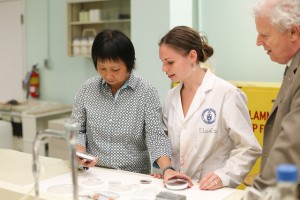This project is part of the Bill and Melinda Gates Foundation’s Reinvent the Toilet Challenge launched in 2011. This initiative stemmed from the realization that traditional toilets, which rely on running water, an extensive sewer network, and an expensive processing system, do not meet needs of approximately 2.5 billion people around the world. The challenge is now in its third phase and consists of 16 different research teams around the world. In 2013, India and China, in collaboration with The Gates Foundation, began their own programs as well.
The aim of all these initiatives is to create a toilet that:
Removes pathogens and recovers valuable resources (e.g. energy, water, agricultural nutrients)
Operates without connections to water, sewer, or electrical lines
Costs less than US $0.05 cents per user per day
Can be sustainably deployed by businesses in poor, urban settings
Most of the ‘improved’ sanitation systems (such as sewerage systems or ventilated pit latrines) require centralized processing that exposes populations to leaks, spills, illegal dumping, and numerous health risks.
The Centre for Global Engineering is designing a sanitation appliance to rapidly disinfect human waste on-site, hence reducing adverse health and environmental risks. Our approach is to devise a system that does not rely on centralized water and sanitation infrastructure and has the ability to reclaim value from human waste.
CGEN, with partners at the University of Western Ontario and University of Queensland is developing an onsite sanitation system that collects, disinfects, and recovers valuable nutrients from human waste streams.





